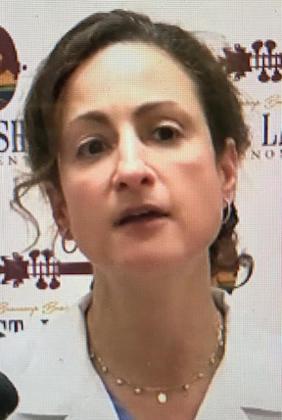
From The Crowley Post-Signal
Although the number of confirmed coronavirus cases appears to be leveling, the latest models from state government show a peak of cases, at least in the Acadiana area, this summer.
“We expect to see that greatest increase actually some time this summer,” said Dr. Tina Stefanski, the Region 4 medical director for the Office of Public Health.
While some models predict lowering numbers of infections, which led doctors from Lafayette General and Our Lady of Lourdes to say last week that they believed Louisiana has already peaked, Stefanski explained extensive state modeling shows the opposite.
“There are just lots of different models, lots of different academic institutions who are looking at numbers, numbers of testing, individuals who are tested, individuals who are hospitalized, and then, based on that rate, they try to predict when we might see our peak or our greatest number of infections in the community,” she said.
A peak is when the highest number of people enter the hospital for COVID-19 care in one day. Stefanski said the goal is for there to be a slower peak and not a quick and sharp one.
Numbers released by the Louisiana Department of Health at noon Tuesday revealed 502 additional confirmed cases of coronavirus in the state, bringing the total number of infections since March 9 to 21,518. An additional 129 deaths were reported, bringing that total to 1,013.
“Today’s (statewide) death count is the largest we have reported in a single day since this COVID-19 outbreak started and it brings the number of Louisianans we have lost to more than 1,000,” Gov. John Bel Edwards said. “That’s 1,013 people who are someone’s mother, father, sister, or brother or child or aunt or uncle. They are our neighbors, friends and coworkers. They are more than just a number on a report or graph, and as our fellow Louisianans, we all grieve alongside their families.
“Our analysis shows that most deaths come 11.2 days after the onset of symptoms, which is why we must look at long-term data and trends. It is also why it is incumbent upon our people to follow the Stay at Home order, because just as the positive things we do now will save lives in the future, the negative things we do could threaten lives as well.”
Officials agree continued compliance in social distancing and staying at home is key to not overwhelming the health care system.
Stefanski said, “We definitely are still right in the middle of this virus infecting individuals, so we don’t want people to back off. We want people to persist. Don’t be complacent.”
If measures are followed, Stefanski said that the slow rise and decline of cases “could go into June, July, or August.” However, she noted that the models change every day and are expected to change quite a bit once more people are able to be tested for COVID-19.
Edwards said the curve has been flattening, but it will not stay that way if residents ignore the stay at home order as they apparently did over the Easter weekend. He said there was evidence, including anecdotes and a website that records movements of cellphone customers, that many in the state were less mindful of the need for social distancing over the Easter weekend.
